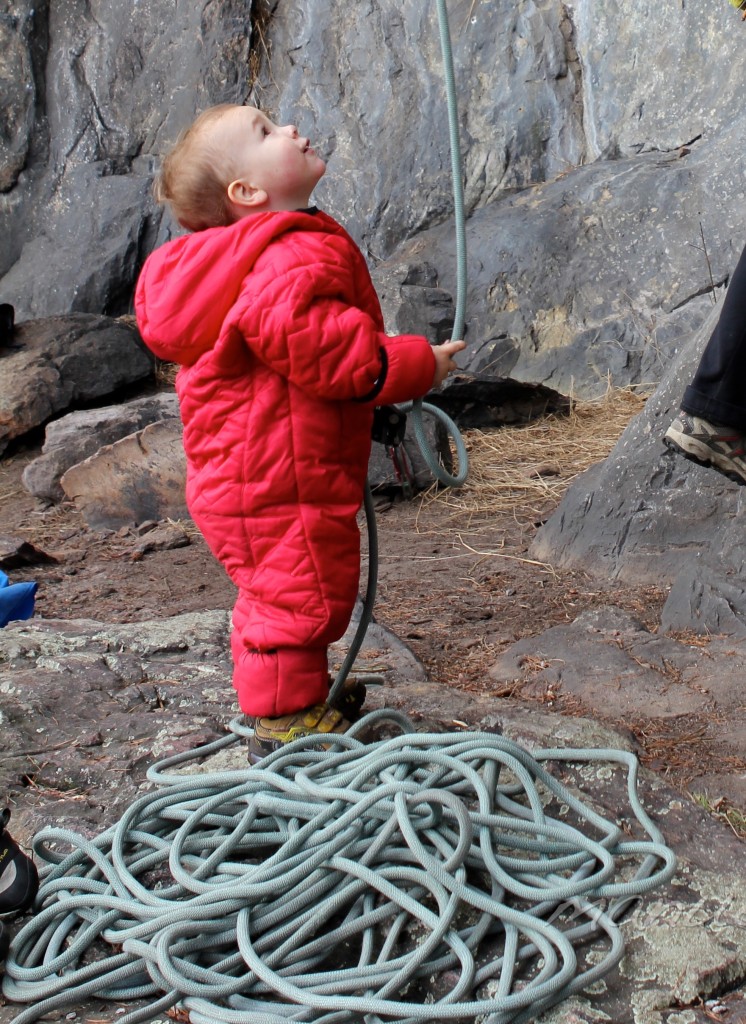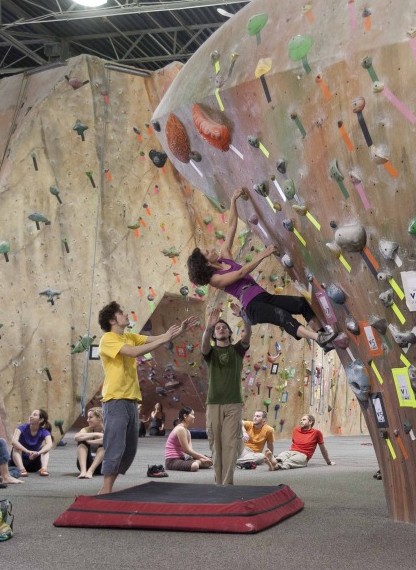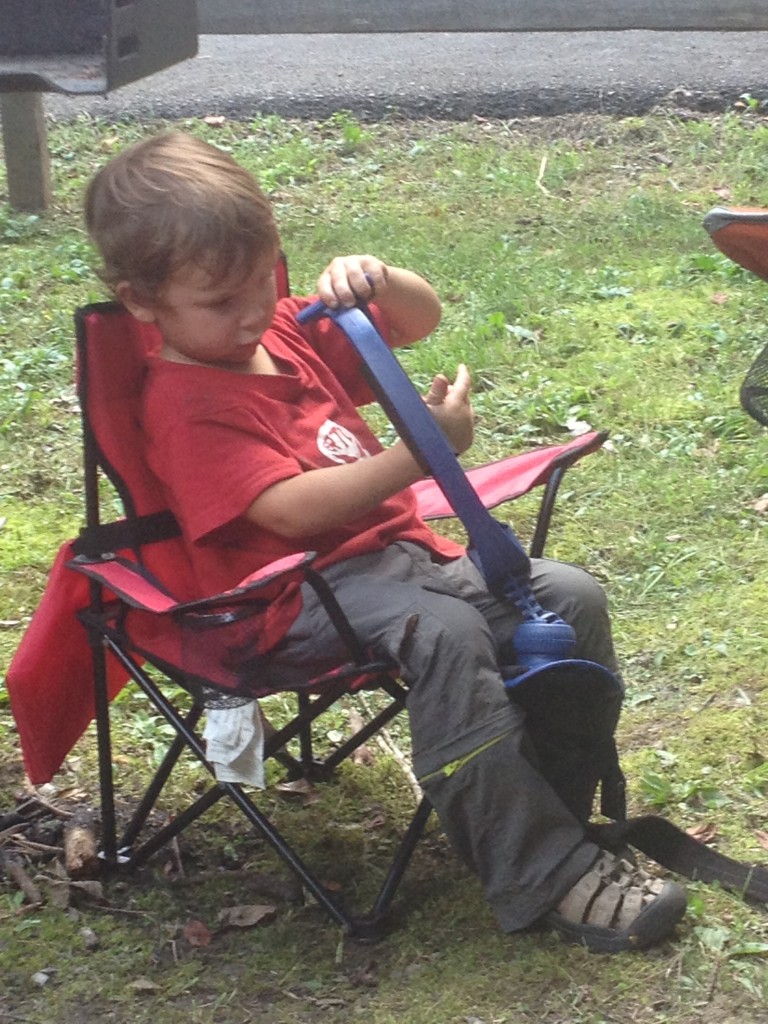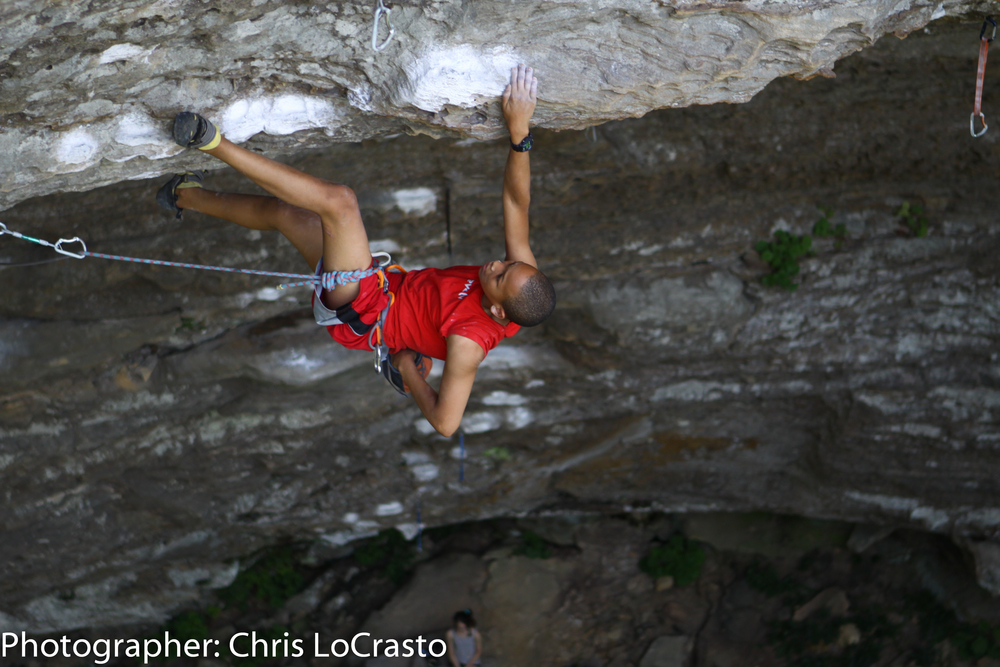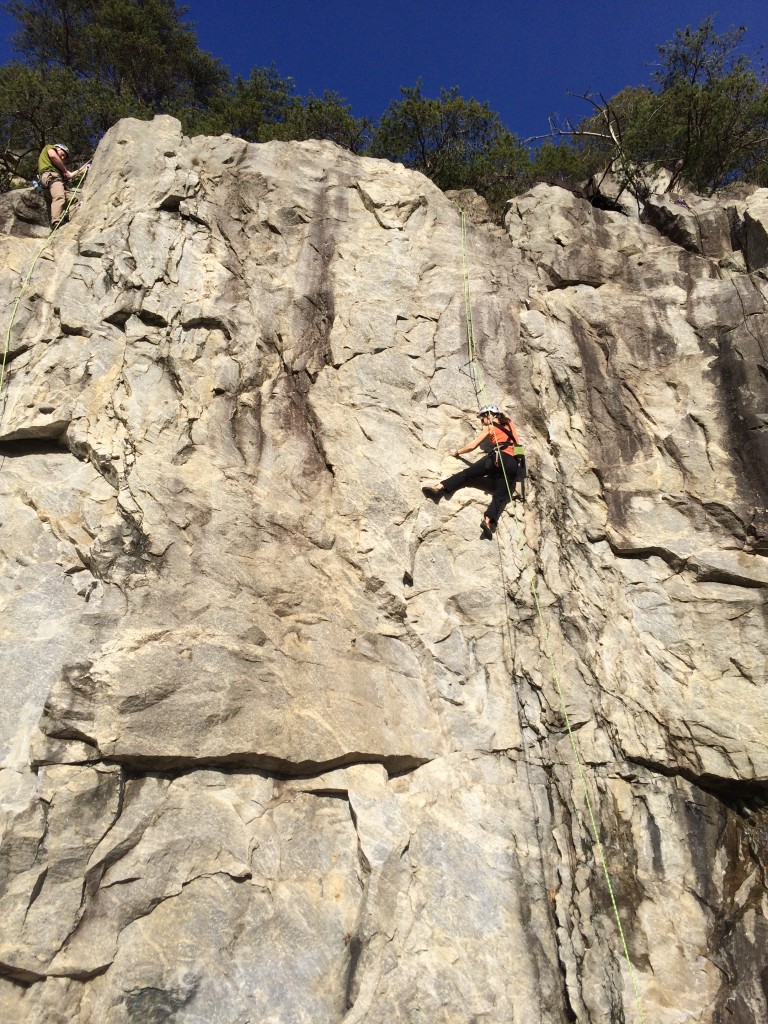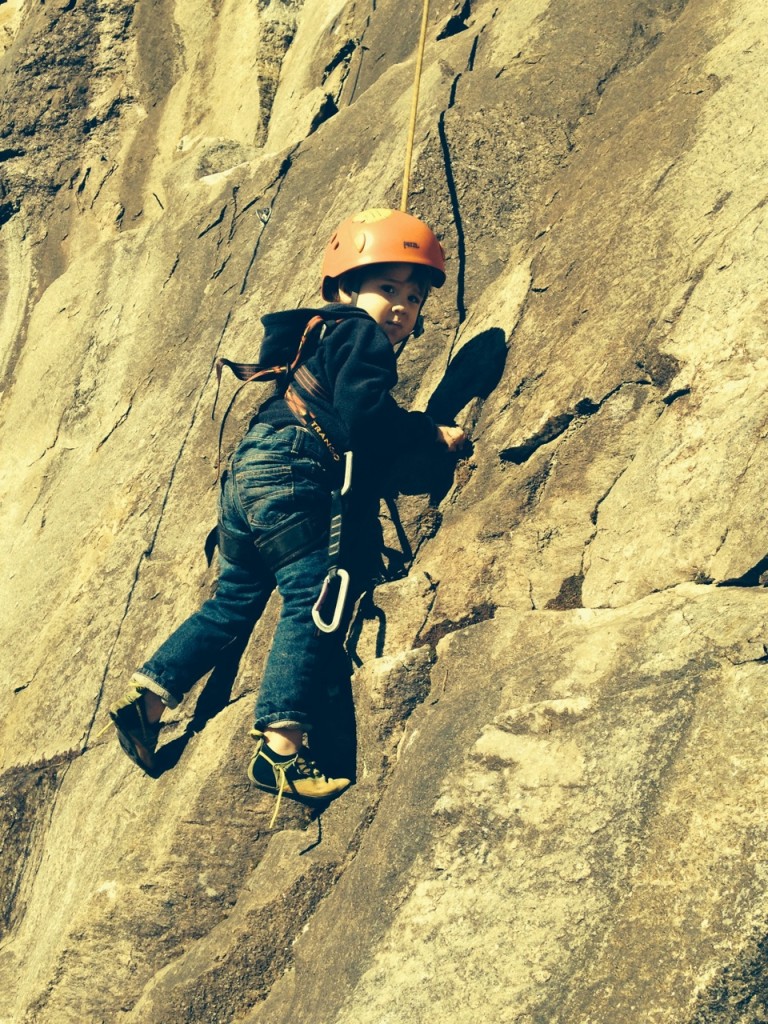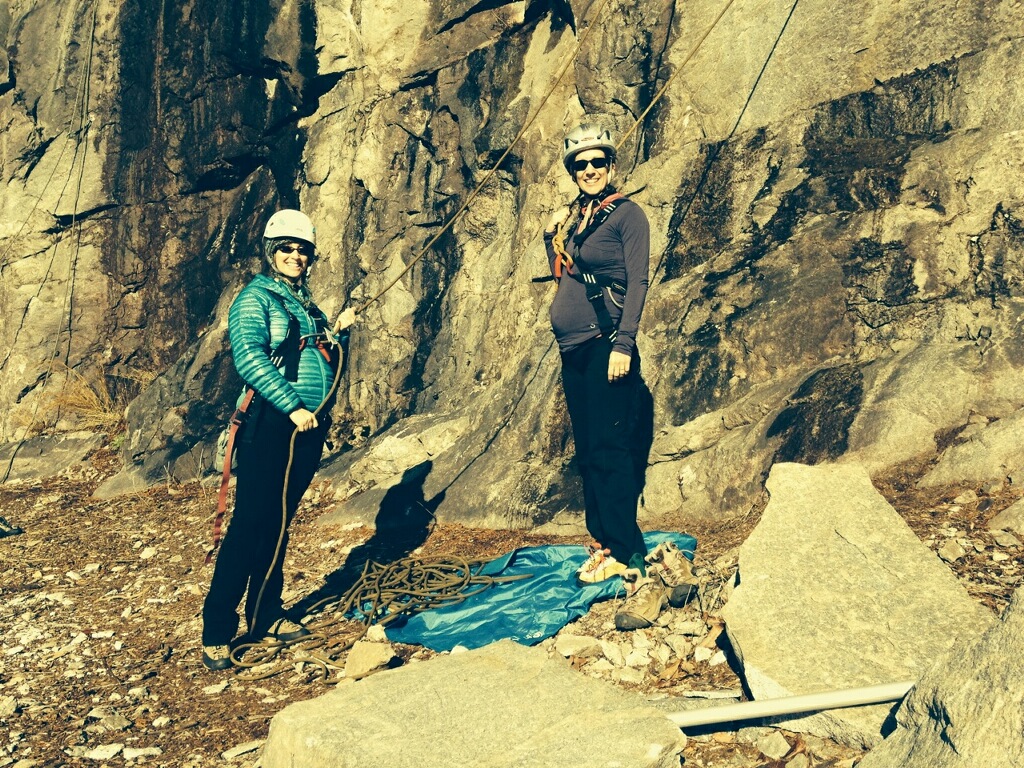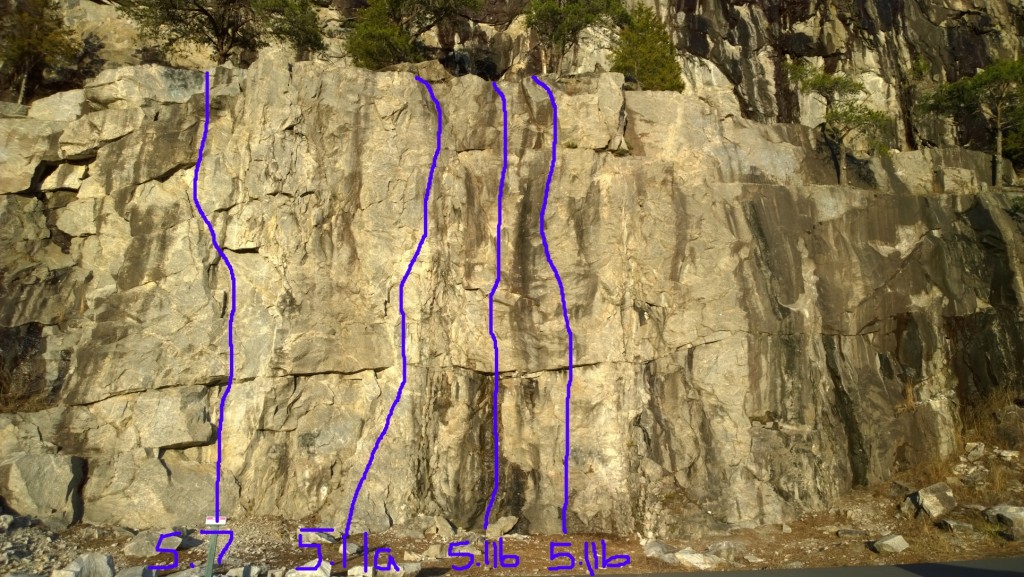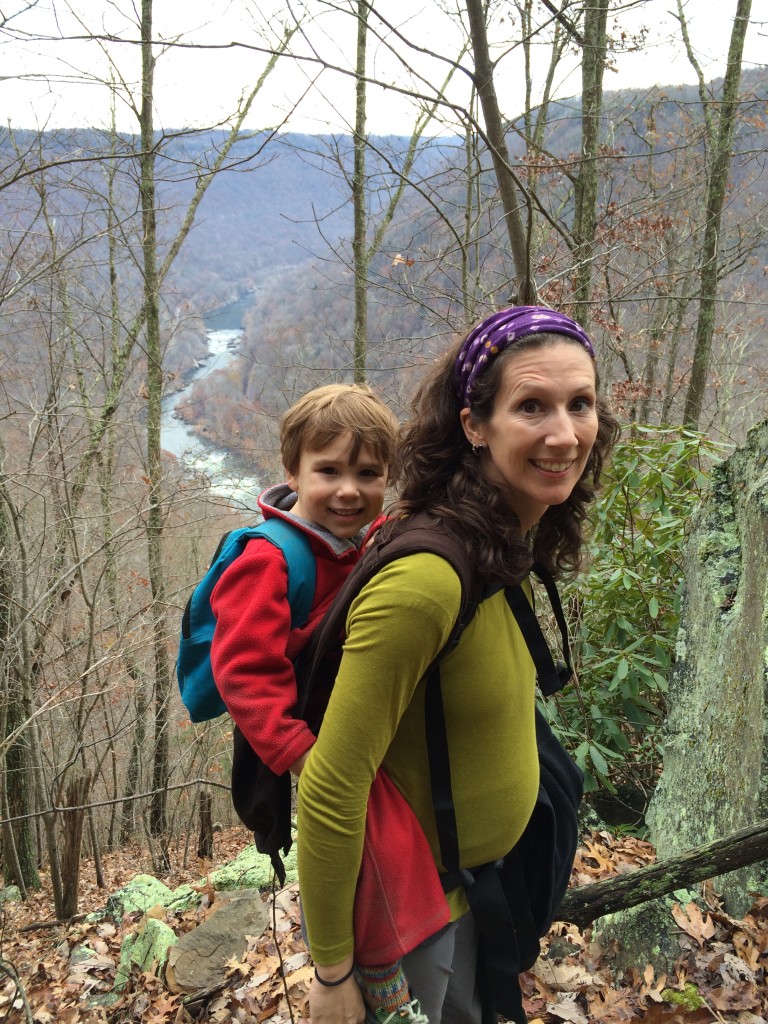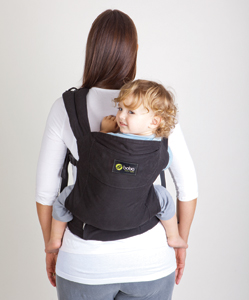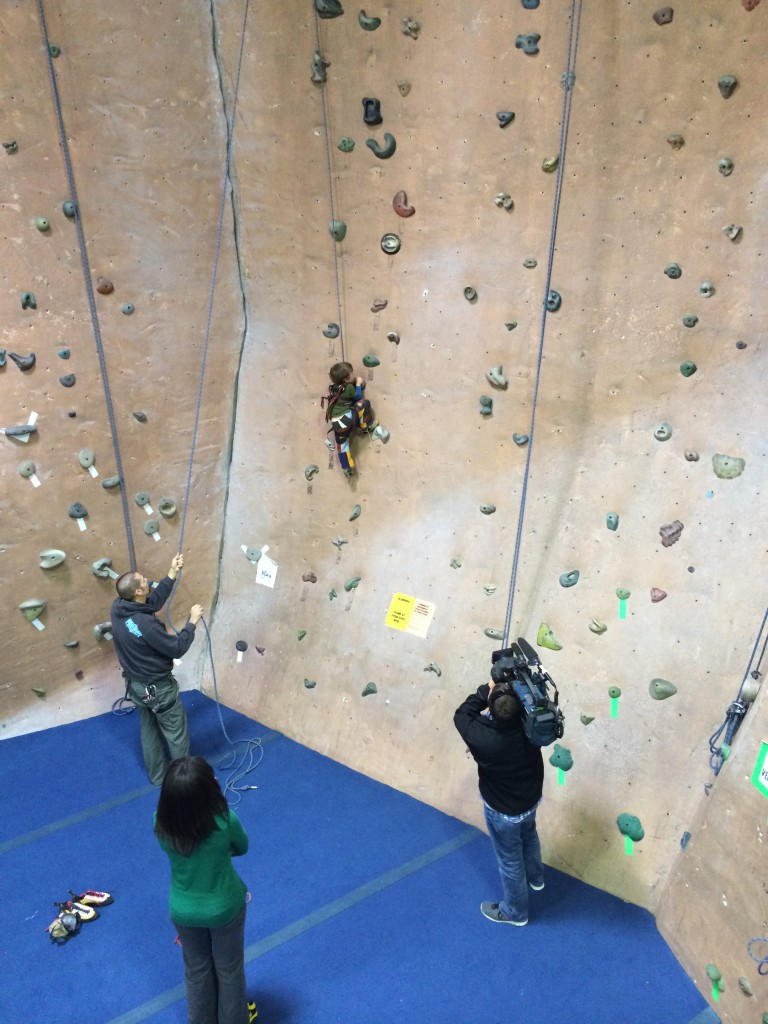A lot of folks assume that rock climbing and pregnancy go together about as good as ants and a picnic. However, with one pregnancy under my belt, and well on my way to completing a second, I can honestly say that climbing can be a healthy and enjoyable prenatal activity. That being said, just as not all women should attempt to run/bike/yoga during pregnancy, climbing is not for everyone. If you suffer from back pain, which is a common thing for many women, you would not even think of climbing. I can suggest you to read this content and hopefully you will feel better soon. But if rock climbing is an activity that you engaged in on a regular basis before becoming pregnant, it’s an activity that is perfectly acceptable to continue for most women. (Disclaimer: it’s ALWAYS a good idea to clear it with your OB/midwife first.)
There are a few extra precautions that many expectant moms choose to take at certain points in their pregnancy. For example, with both of my pregnancies, I stopped bouldering and leading early on and switched to a full body harness around 20 weeks. For more specifics on those safety precautions and why they are important, click here.
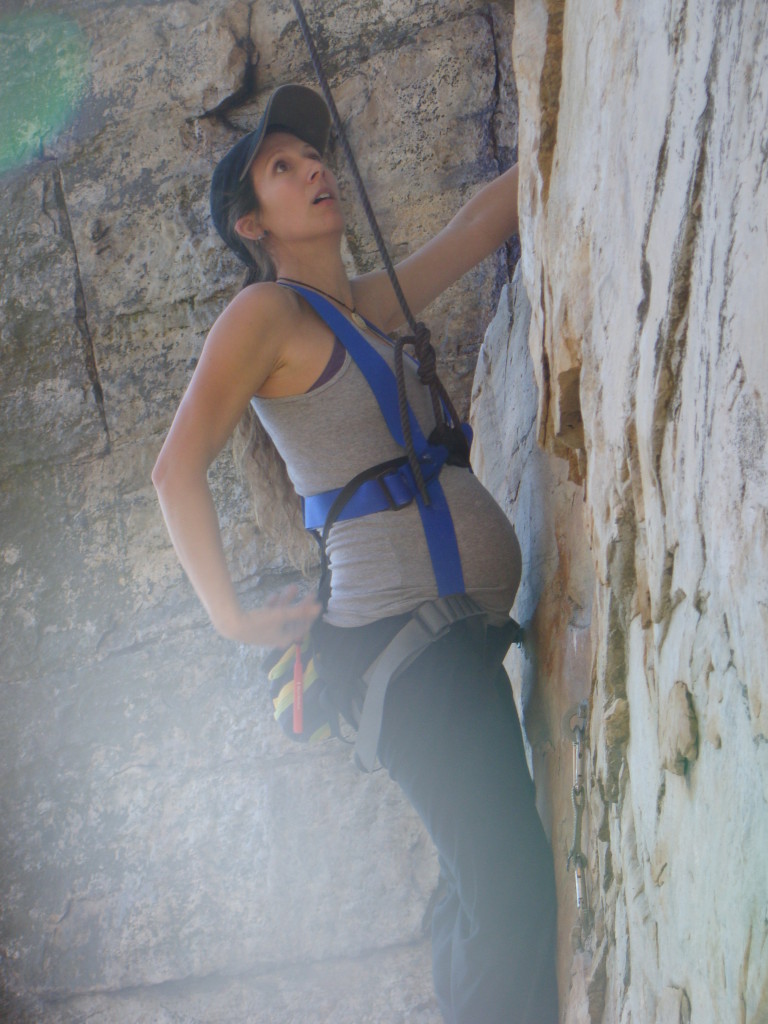
Crankin’ at Pilot Mountain during my first pregnancy (28 weeks)
But in addition to these logistical changes that are made on the OUTSIDE, a pregnant mama will undoubtedly experience numerous physical and mental changes on the INSIDE. And that’s what I’d like to focus on in this post. Obviously, every woman’s body handles pregnancy in different ways, but the following is a compilation of what symptoms a cragmama-to-be can expect to feel and experience on the rock, and some tips on how to handle them.
SYMPTOM: Increased Tiredness. Ok so this one may seem obvious because it literally affects EVERY pregnant woman I’ve ever met, no matter how active or lazy they are, but don’t underestimate the impact it can have! Tiredness is ironically at it’s worst during the 1st trimester, when most people don’t even know you’re pregnant!
HOW TO HANDLE: Rest when you need to rest. Now is not the time to push for one more pitch before dark when you know you have a grueling hike out at the end of the day. Pace yourself, drink plenty of water, and listen to your body.
SYMPTOM: Nausea. This will affect some women more than others, and can vary from pregnancy to pregnancy in frequency and intensity. With my first, I had zero nausea, but the second time around I had an almost constant low-level nausea for the first 10 weeks.
HOW TO HANDLE: My nausea seemed to improve with activity, so a short session at the climbing gym was a great remedy. I learned the hard way that activity on an empty stomach did not bode well, so a stash of snacks in my gym bag was essential.
SYMPTOM: Out of Breath. Without fail I would start sucking wind the minute I put a pack on my back (or a 30 pound toddler, in the case of pregnancy #2.) Hormones are responsible in early pregnancy, and your growing womb-mate is to blame later on.
HOW TO HANDLE: Take it slow on approaches, especially the uphills. When your heartrate starts to soar and you can’t carry on a conversation, take a break. Be realistic about the amount of gear you need to schlep in.
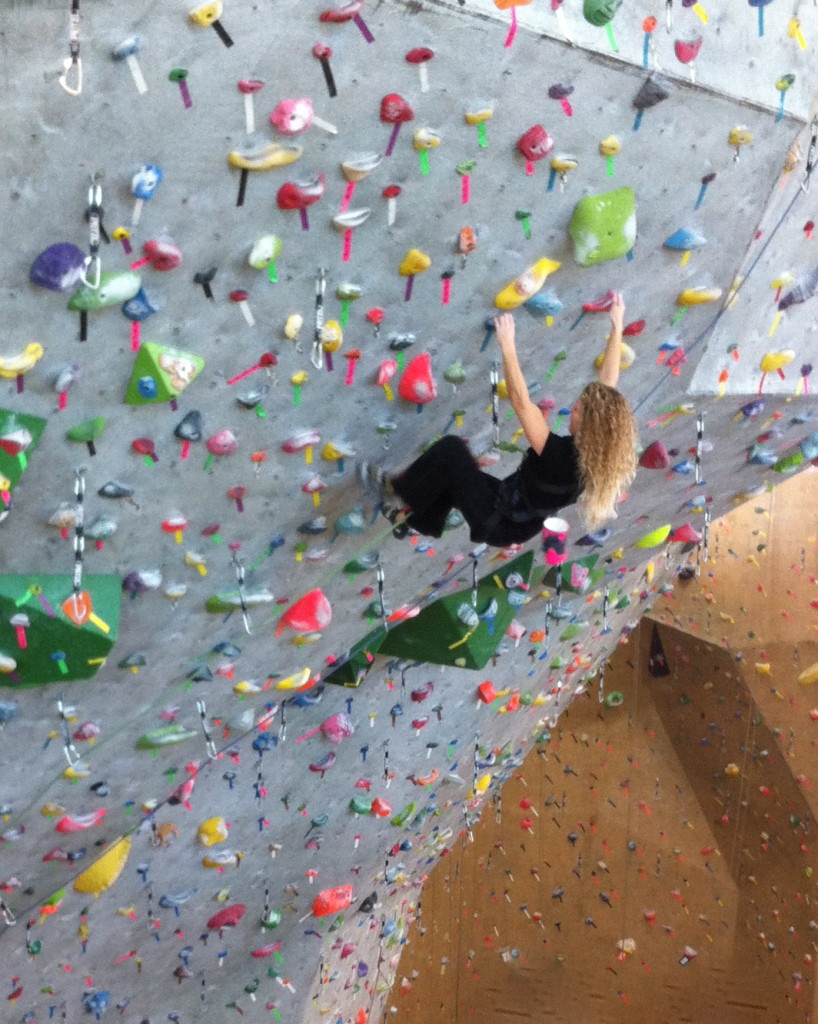
A 6 months pregnant Melissa Love training at her local gym.
SYMPTOM: Swollen Feet. Edema in a non-climbers feet make for some slight discomfort, especially at the end of the day. But to a climber, it can make putting on a pair of climbing shoes downright torturous!
HOW TO HANDLE: You know that very first pair of climbing shoes you bought, way back when you didn’t know how they were supposed to fit and sized them 2 sizes too big? Or your comfy “all day trad” shoes? Time to break those out full time – trust me it’ll make a big difference!
SYMPTOM: Pressure “Down There.” While rather unlady-like to talk about, a swollen feeling in the nether regions is something most women endure at some point during pregnancy. Don’t worry, your baby won’t fall out! Pregnancy hormones and all that extra blood flow are to blame.
HOW TO HANDLE: As odd as it sounds (and embarrassing as it is to admit!), a post-activity ice pack can help relieve the swelling.
SYMPTOM: Loose Joints. Relaxin is a pregnancy hormone designed to loosen up the pelvic joints to prepare them for all the expanding they’ll need to do during your baby’s birth. Unfortunately, this “loosening” is not limited to just the ligaments involved in childbirth, which makes a pregnant woman’s entire body more vulnerable to strains, sprains, and instability issues.
HOW TO HANDLE: Avoid tweaky moves that put your joints in a compromised position, especially if you’ve ever had dislocation issues. Drop-knees, hard gastons, and cranking hard on tiny holds with bad feet are some examples of situations where you’ll need to be extra careful.
SYMPTOM: Pelvic Instability. Related to the above, this condition involves an instability of the joints that make up the pelvis. Symphysis Pubic Dysfunction (SPD) and SI Joint Pain are quite often the source of a lot of hip, back, and pubic/groin pain for pregnant women.
HOW TO HANDLE: Kegel exercises can help strengthen everything in that area, but there’s not really a way to prevent this from happening, as the body preparing is itself for what it will need to do during childbirth. As with the others, listen to your body – if it feels good, it’s probably fine, but if a certain type of movement causes pain, stop doing it.

Aimee Roseborrough “preggo-pointing” 5.12 in her 8th month with baby #2!
SYMPTOM: Diastisis Recti. This condition occurs when the connective tissue in between the Rectus Abdominis (6-pack muscles) thins and separates, creating a gap in the midline of the body. Julie Tupler, an RN who has worked with pre/post-natal patients on this issue extensively, does a great job explaining what this condition is and exercises that can be used to prevent/heal a separation in this interview.
HOW TO HANDLE: DO NOT do any sort of abdominal exercises that flex your upper or lower body up towards your midline (ie crunches or hanging leg lifts), or forceful twisting on the oblique (side ab muscles) after the 1st trimester, and make sure any separation has healed before attempting ab work post-partum. Fellow climbing mama and PT Aimee Roseborrough (who’s been interviewed on this blog here) recommends sticking to vertical/slightly overhanging terrain during pregnancy, or well below your limit on steep terrain. She also recommends wearing an ab binder and seeing a PT specializing in women’s health post-partum if you end up with a separation – the first 6-8 weeks post-partum are the best opportunity for healing, before scar tissue starts to build up in the separation. Fellow Trango athlete Melissa Love had a diastasis with her 2nd child that went undiagnosed for 15 months, and after lots of time off is still climbing in a splint – she warns, “Be careful! You do not want this!”
SYMPTOM: Braxton Hicks. These annoying “practice contractions” are a prelude to the real thing, although in my experience, feel nothing like real labor. With my Braxton Hicks I could feel (and often see) a “hard spot” on my abdomen where part of my uterus was tightening. While they were not painful, they got progressively more intense and uncomfortable as the weeks went on.
HOW TO HANDLE: While there’s nothing to do to prevent these harmless annoyances, a surefire way for me to trigger more of them was/is to let myself get dehydrated or by standing on my feet too much. If you feel them coming on at the crag, take a rest and some swigs of water and they should eventually settle down.
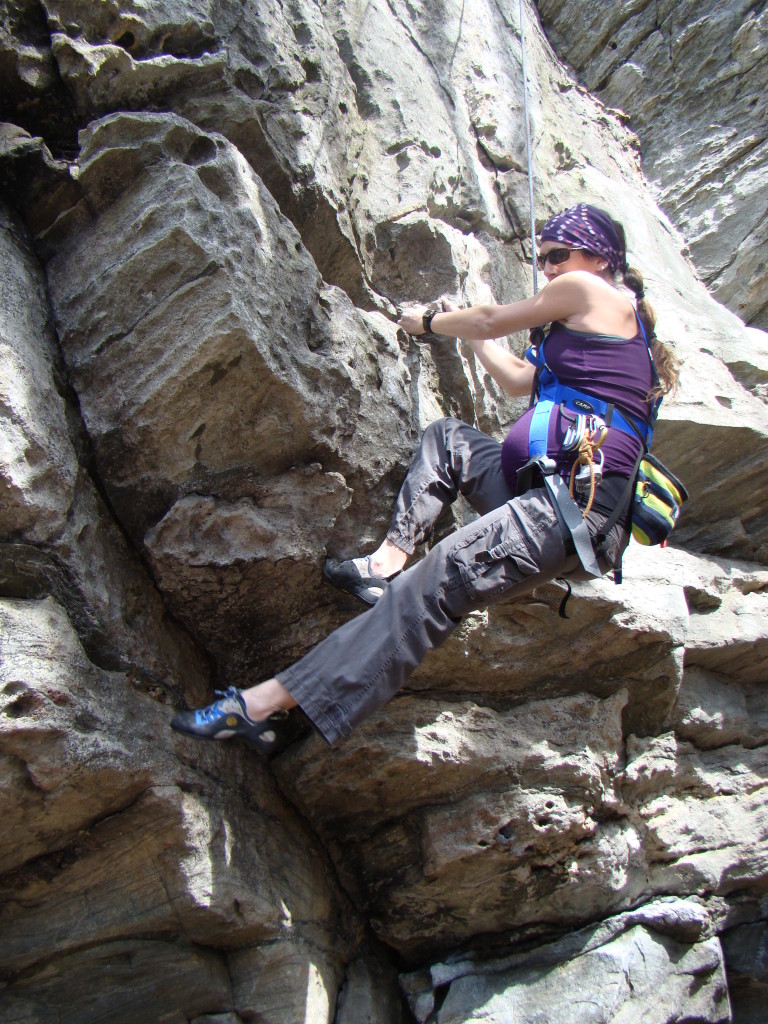
My 1st pregnancy and 35 weeks along
SYMPTOM: Lack of motivation. It’s hard to stay psyched to do something that you get measurably worse at it with every passing week.
HOW TO HANDLE: If you stay focused on the numbers, you’re going to be disappointed. It’s time for a shift in perspective – pregnancy is not a time for sending at your limit, it’s a time to enjoy the freedom that comes with moving on the rock. That being said, it’s certainly okay to take some time off, especially if any of the above symptoms are starting to get to you – do what you feel is right for your body.
SYMPTOM: “I can’t do _________ anymore!” Depending on the level you were climbing at before you got knocked up, most women find themselves saying this to their partner at some point (and often in a whiny voice…thanks hormones!) The bigger my belly got (gets), the harder it was (is) logistically to do mantles or certain high foot/rock on type moves – that darn belly just got in the way!
HOW TO HANDLE: Again, shift your perspective – staying active is important, but sending that red-taped project in the gym is not. Laugh it off and move on.
Pregnancy is a unique and miraculous journey, one that I have been blessed to experience twice now. Despite the various unpleasantries I had to endure, it was always worth it in the end. Fellow Cragmama Charmagne Cox once said something when I interviewed her that always stuck out to me – “I never regretted the routes I didn’t send while I was raising my babies.” My guess is that I’m not the only mama out there that wholeheartedly agrees with that one!
If you’ve climbed through a pregnancy before, what was your experience? If you stopped at a certain point, what symptom(s) finally “did you in?” If you are a climbing mom (or dad!) hoping to start a family in the next few years, what do you think your attitude towards climbing will be after you see those two pink lines on your (or your significant other’s) pregnancy test? (And thanks to all the strong mamas out there who shared pictures and advice with me for this post!)
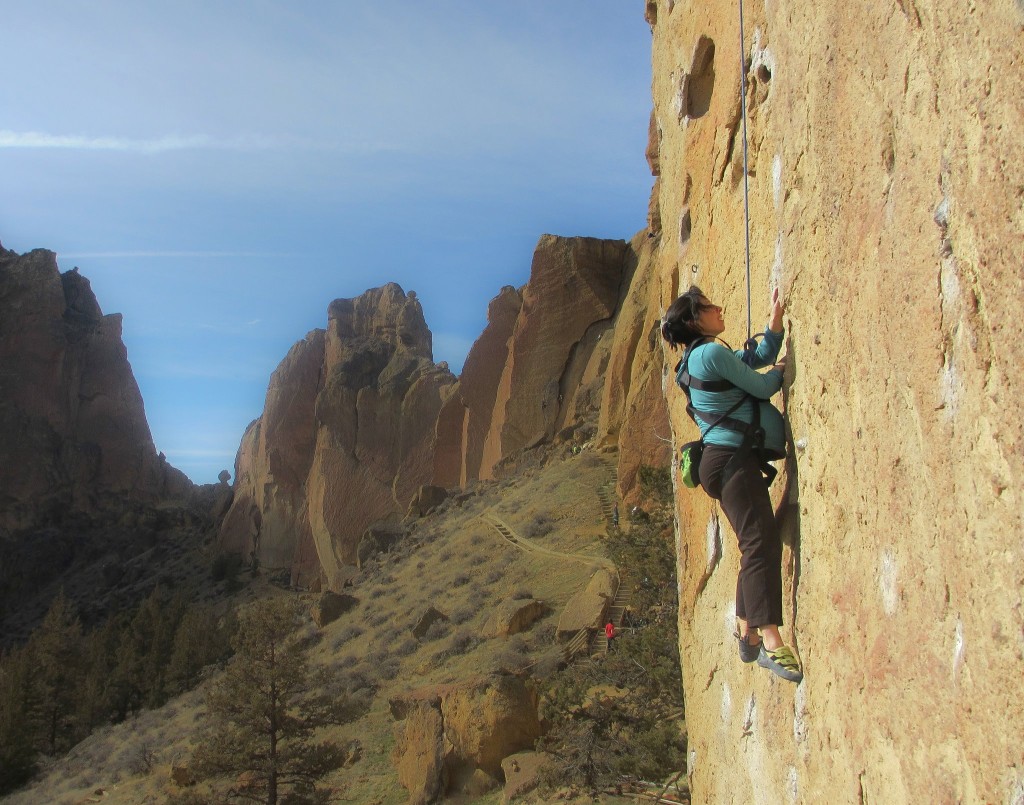
Aimee Roseborrough still crushing at 37 weeks!

